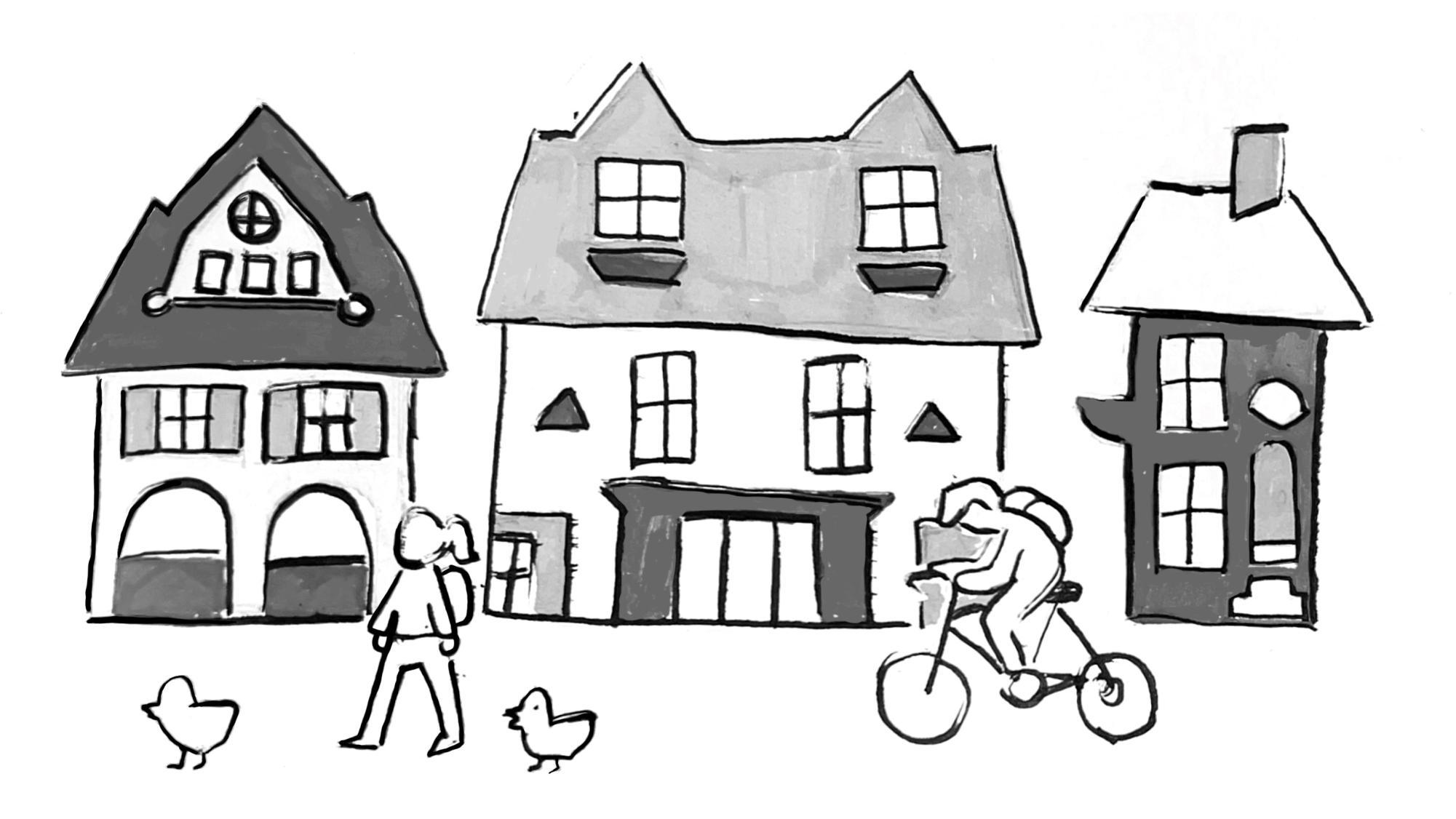
Whitman has always made significant efforts to build a sense of community within campus, including requiring students to live on-campus for the first four semesters of their Whitman experience. Though gathering places such as Reid Campus Center may initially come to mind, it is the spaces that are integral to our daily activities: Where we live, where we eat and where we work– that truly shape our experiences within the campus community.
In their most recent push to maintain what is one of the main appeals of a small college–the tight-knit community on campus– a new housing option for juniors and seniors is being built along Boyer Avenue and Marcus Street. The Junior-Senior Village, as the space is being named, will have three buildings filled with apartment-style residences for upperclassmen.
Many of the goals of the new Junior-Senior Village mirror those that Whitman had for one of the most active hubs of campus life, Cleveland Commons, when it was built in 2018. Whitman also had similar goals for Stanton Hall, which opened the same year.
When Cleveland opened its doors, it was a huge leap from the separate dining spaces in each residence hall and one of its main goals was to increase the interconnectedness of students who live both on and off-campus. To this end, Whitman found their efforts a success.
Prior to building Cleveland Commons, there were three separate dining halls on campus in Prentiss, Lyman and Jewett Hall.
Whitman’s Assistant Director of Admissions, Lizbeth Llanes Macias, graduated from Whitman in 2021. She spoke about her memories of this dining system and the way it made the campus feel more split up. When she was an Anderson resident, Llanes Macia recalls eating most of her meals in Prentiss with friends who also lived south of Boyer Ave. Though convenient, the physical separation of dining spaces, which double as gathering and socializing spaces, led to a tangible interpersonal separation felt amongst students at the time.
This side effect was something that Whitman hoped to tackle by opening Cleveland. A 2018 post on Whitman’s website discusses this with Roger Edens, who was the general manager at Bon Appétit at the time.
“The hope is that you’re going to get a whole lot more mixing between first- and second-year students, juniors and seniors, faculty and staff and even community members, creating a much more interesting dynamic,” Edens said.
In this way, Llanes Macias believes that Whitman lived up to the expectations that they set for the new student space.
“You did start to see a lot more of that community aspect of just hanging out, having lunch, doing study groups. I think the goals were achieved,” Llanes Macias said.
However, the dining hall project still left something to be desired when it came to keeping juniors and seniors active on campus. The tight-knit on-campus culture that is built in the first two years that students are required to live on campus, or in Interest Houses or Fraternity Houses, is changed once students scatter across surrounding neighborhoods in Walla Walla during their later years at Whitman.
Though students remain close with each other, their connection to the campus culture and younger students is disrupted. According to a post on the Whitman website from earlier this year, maintaining connection across all four years is a top priority for the new upperclass housing space. Sydney London, a member of Whitman’s class of 2023, wrote about building this community in a Whitman post.
“The Junior-Senior Village will not only serve as a space for community-building amongst its residents but also bring together students across all class years at Whitman—with its close proximity to campus events and shared spaces for recreational activities,” London wrote.
In order to achieve this, students’ needs were communicated to ZGF Architects, who has worked with Whitman on many campus projects throughout the years such as Cleveland Commons, Stanton Hall and Jewett Café. Those involved in the project asked for feedback from students through focus groups, resident assistants, clubs and affinity groups on campus.
As the construction of the buildings continues, a group that includes students, Resident Assistants and Resident Directors meet about once a month to discuss furniture and environmental graphic design in the new spaces.
The aim is to design communal areas that students will want to spend time in and that will bring students from across Whitman’s campus to socialize, study and bond with other students that they may not have a chance to meaningfully interact with otherwise.
Although all of this feedback is helpful, it is still impossible for it to be fully comprehensive because it relies on the students who are more involved on campus. The students who volunteer to talk to architects and designers and the ones who take on leadership roles within their groups. The thoughts and feelings of these select groups must then be generalized to the entire campus, risking a skewed representation of the student population and their needs.
Andrew Johnson, Whitman’s Director of Residence Life and Housing and Jeff Hamrick, the Vice President for Finance and Administration, have acknowledged in an email statement that navigating the needs of older students is a challenge, citing their desires for “more autonomy over their spaces”. For this reason, juniors and seniors will not be restricted to certain halls within the village, allowing groups of friends from different classes to live in the same apartment suite, most of which are suitable for four people.
To solve the issue of summer housing for upperclassmen who stay in Walla Walla to work or do research at Whitman, both academic year and twelve-month housing agreements will be available for the units. The goal of this is to help relieve some stress surrounding housing and to make the process more efficient, with less moving around and roommate-shuffling needed.
Since the apartments are still a part of the Whitman College campus, it is important to raise the question of how much juniors and seniors will be expected to comply with the rules and regulations that are applied to first-years and sophomores who live in traditional residence halls.
The most similar housing option to the Junior-Senior Village that Whitman currently offers is College House, which offers apartments to mainly sophomores and appeals to those who want more independent living. Importantly, it also does not require students to be on the meal plan. There is a Resident Assistant who lives in the hall and it is included in duty rounds. Thus, residents are subject to quiet hours and other rules and guidelines for on-campus living. For the new Junior-Senior Village, however, Johnson and Hamrick propose a slightly different system.
“There may be a small number of student Community Assistants who help with maintenance concerns and can check on students if needed, but they would be more hands-off than RAs in first and second-year housing,” Johnson and Hamrick wrote.
Despite the promises that they will not intervene greatly in students’ residential lives, these “Community Assistants” could certainly complicate the dynamics of the housing experience, with older students preferring more freedom and often not wanting to feel like they are being policed.
There is also a built-in feeling of authority due to the seniority of Resident Assistants in first-year and sophomore housing, which would no longer be the case for Community Assistants and could possibly impact the way Community Assistants and their peers interact.
There are still many questions like these and the answers will remain unknown until the apartments are up and running. Nonetheless, the Junior-Senior Village is an exciting addition to Whitman’s campus, the likes of which we haven’t seen since the building of Cleveland Commons and Stanton Hall in 2018. It is certainly an exciting time for the classes of 2027 and 2028, who are now left wondering if the residence will truly be ready in time for their final years at Whitman.













